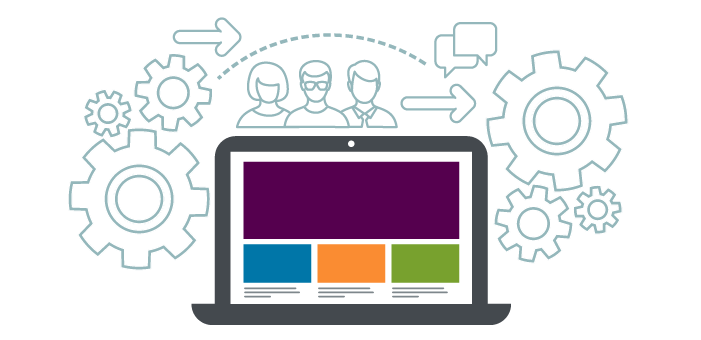
3 Steps to ensure a rich user experience through your benefits website

We recently had a great meeting with a client who asked for our help in creating a benefits website strategy. Interestingly, this was a tech client with a slick, cutting-edge corporate website. Their goal: to provide their internal customers with the same high-caliber user experience they offer external customers. Specifically, they wanted:
- Employees to easily find the benefits information they need.
- Recruiters to have a place to point candidates to find benefits and program information.
- Candidates to be able to quickly assess how this company’s benefits stack up next to other companies’ offerings.
- Spouses and dependents to be able to access benefits information, whenever they need to, wherever they are.
Pie-in-the-sky dreams? Hardly. As we explained to our client, with an effective website in their toolkit, these goals can be their daily reality. Yours, too.
“So, where do we start?” they asked.
This is one of the most common questions we hear from clients. Here’s how we answered—with the same three tips we pass along to anyone interested in developing an effective benefits website strategy.
1. Understand your audience
Employee personas are the foundation for any successful communication campaign. They provide stakeholders with a clear picture and shared understanding of whom you are communicating to. When building a benefits website, you want to identify who is using the site and to whom the site is speaking.
Start with basic demographics like age, job title, and salary. Then, it’s important to dig deeper to think about employees’ lives outside of work. Specifically, what matters to them and what challenges do they face? Personas include areas like family situation, passions, hobbies, demands, and challenges, so they reflect the lives of real human beings.
Knowing more about whom you are talking to ultimately helps you understand how to best organize the site and craft content for the audience you’re trying to reach. You’ll have far greater success in engaging employees with your messages when your content reflects what they care about as individuals.
2. Take a phased approach
Creating a phased approach to launching a benefits website can help make the endeavor seem a little less daunting. In fact, it’s standard practice to roll out content and functionality in phases. We typically customize the phases based on our clients’ needs, budget, and resources. Here’s an example of a two-phase approach.
Phase 1 could include:
- Core benefits content such as health, wellness, insurance, and retirement plans
- Annual enrollment-specific content such as what’s changing, how/when to enroll, decision-making support, and whom to contact
Phase 2 could include:
- Goal-based content (How can I have more energy, balance my work/life, stop living paycheck to paycheck, etc.?)
- Life changes content (I’m getting married, having a baby, moving, etc.)
- Interactive content & tools
- Videos
- New hire content
- Recruiting content
- Page ratings and employee feedback
3. Get the word out
Just because you’ve built a great website doesn’t mean that employees will use it. Marketing is an important final step in any successful rollout, and your benefits site is no different.
We recommend a multi-channel approach for maximum impact. The good news is that there are many high-impact, low-cost ways to promote your site. Consider what communication channels have worked well in the past, along with new and different ways to grab attention:
- What online channels are you using already? All your sites should include links to the new site. Think HRIS, intranet, and vendor/carrier websites.
- What traditional communication channels are already in place? Add the URL to your email signature, educate managers on the site so they can direct employees to the site, and send announcement postcards home to reach spouses.
- What unexpected channels could you be missing? Include the URL in your voicemail messages, on window and mirror clings, and on branded sticky notes.
It’s important to remember that launching your new benefits website doesn’t ensure that people will keep coming back to it. You want to make visiting the site a part of employees’ daily routines, and for that to happen, you need to keep it top of mind, year-round. Include the URL on any print materials you distribute, and drive employees to the site in emails you send them about specific campaigns or programs.
By following the steps above, your team can create a benefits website strategy that will get your employees, prospective candidates, and recruiters the benefits information they need, when they need it. Need help? Let us know.
Work with Us
We partner with organizations that value their people first. Let’s talk.

Jennifer Benz, SVP Communications Leader, has been on the leading edge of employee benefits for more than 20 years and is an influential voice in the employee benefits industry.
